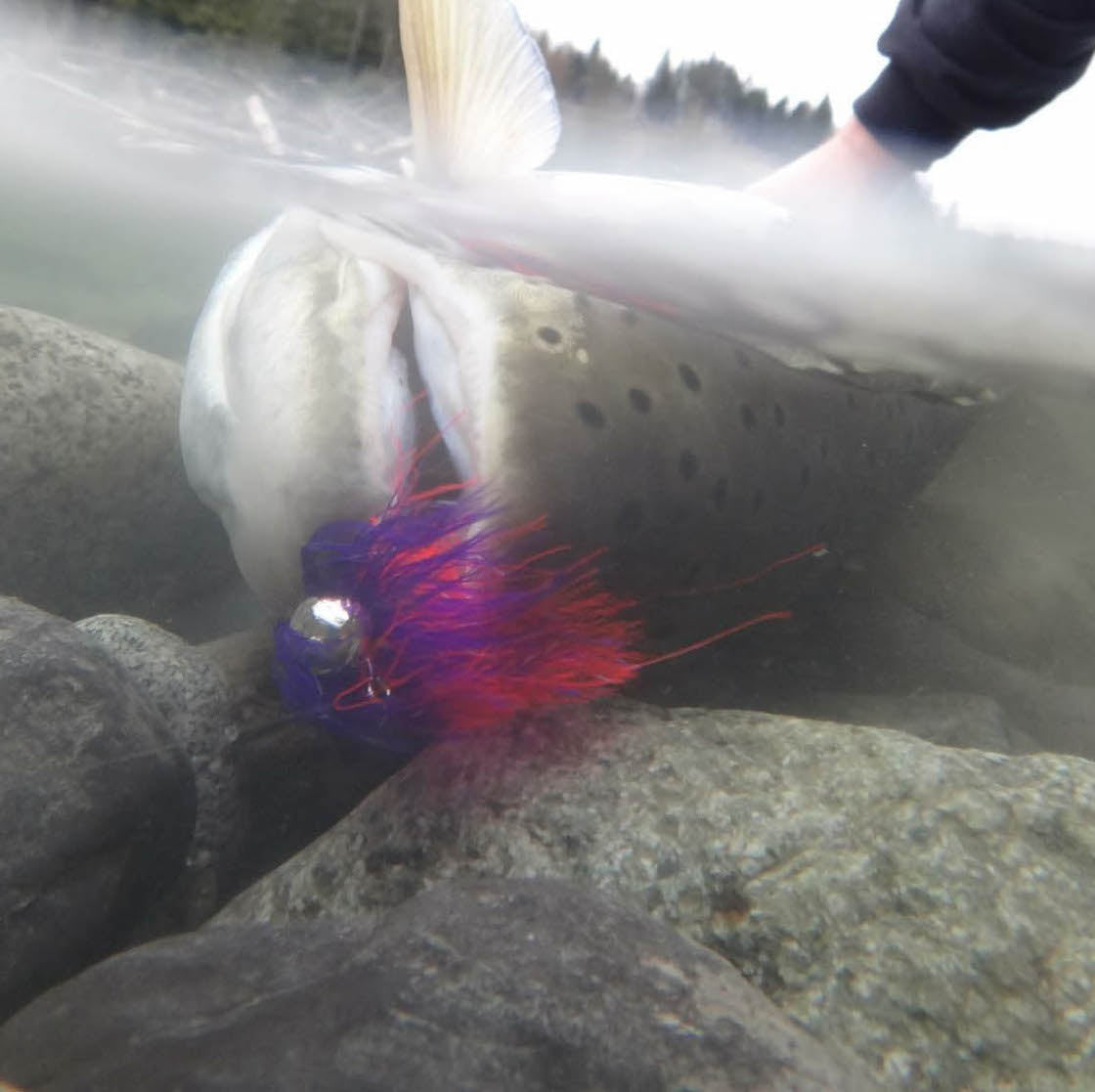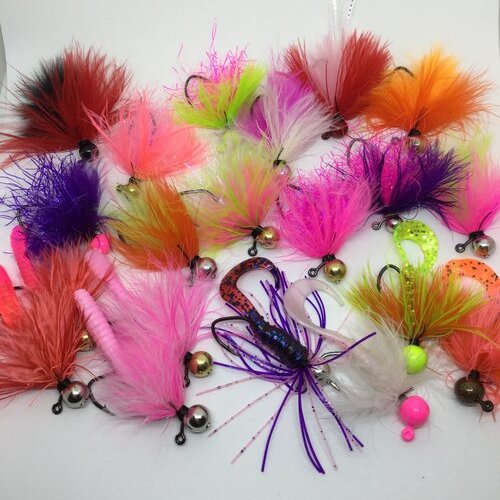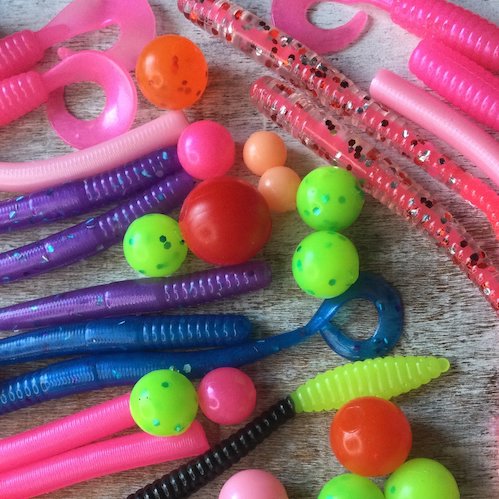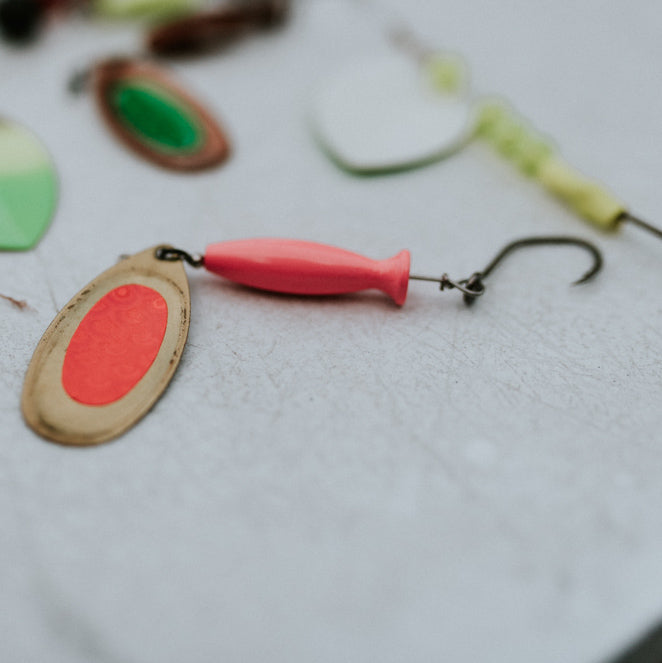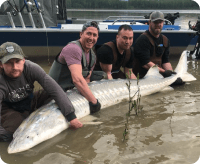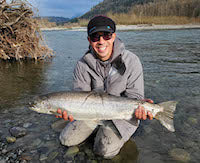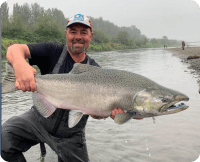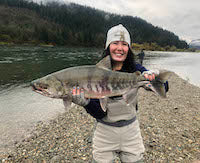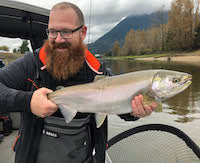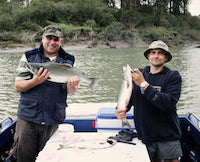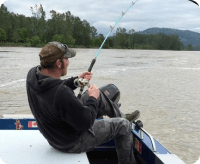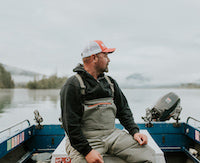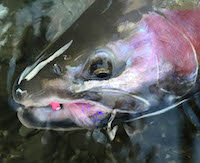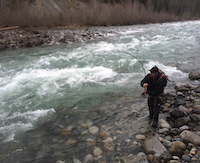Straight Tippin’
December 2022
Over the years of Steelheading, one thing I have learned is that these creatures are very curious and are often very aggressive towards things that wiggle, wobble and pulsate.
As a longtime jig fisherman, I have experimented with all manner of furs and feathers to entice Steelhead. While Steelhead will absolutely smash a basic feathered jig, my catch rates absolutely took off once I started to tinker at tipping my feathered jigs with worms and grubs.
Something about the enticing wiggle of soft plastics can drive these fish to

attack your jig.
For my tipping, I carry a selection of soft plastic worms, curlytail worms and grubs. The worms have a natural look and their motion in the current calls to the Steelhead. The curly tail variety of worms and grubs creates a more erratic movement that proves to be just the ticket to elicit an aggressive attack response.
When I embarked on creating my own soft plastics, it opened the door for me to get very creative with tipping, and to try a rainbow of colours in many different sizes and configurations. Soft plastic worms, grubs and curlytail worms come in a variety of sizes and colours. In sharing my experience and findings, I can help you get right to the task of effectively tipping your jigs to get that fish on your line!
GRUBS- I like to use a 3” sized curlytail grub (which is why I chose that as the size to make them for sales). The tail on grubs has a very enticing movement as does the curlytail worm. The grub has a slightly larger and thicker tail than the worms.
WORMS - I carry an assortment of 3.5” and 4.5” worms in an assortment of colours and styles ranging from very bright, to dark and subtle. The curlytail worms I use are 4.5” long and come in a wide variety of colours so I can match them to the water conditions.
Coloured/dirty water: reach for bright coloured worms, grubs and jigs.
Low/clear water: reach for dark and natural coloured worms, grubs and jigs.
Presentation & How To Tip
As with all float fishing jigs for Steelhead, the best presentation is the drag free drift. This presentation has the jig travelling downstream at the natural speed of the current. This allows your jig materials to pulsate naturally in the current. Often the water flow will organically provide the movement to keep your jig bouncing enticingly under the float.
I feel pretty strongly that the sliding loop knot is the best knot for this application. This knot style allows some room within the knot for the jig to have space to more freely move in reaction to the water currents, as your jig bounces under the float. I frequently promote this knot style in my videos, so that resource is handy if you want to watch exactly how I do it.

Very often at the end of my drift, I will allow the jig to swing cross current under tension. This causes the soft plastic tipper to wiggle erratically, resulting in some rod jarring bites!
When tipping my jigs with soft plastics, I experiment with how long I want my tipper to be. Most commonly, I cut a piece of the worm or grub off to keep the profile slightly shorter. This helps to avoid having a fish grab just the end of the soft plastic, and missing the hook completely. I generally keep my offering less than about 4” long in total (including the jig).
Another popular style of fishing jig tippers is on a bare jig hook, with no other feathers or materials). As with standard jig fishing, you can use a pin and bead style jig for this- or a lead head style jig. Just slide your hook down the center of your worm or grub, and you’re good to go! This is a great option for anglers who don’t tie feathered jigs and want an affordable alternative to feathered jigs.
Last year I put together a few hook and worm combination packs for sale on my website, for anglers who like this quick, simple and affordable lure style.
I have caught plenty of Steelhead on just a worm or grub, slid onto a bare jig hook. I like to use the lead head jig hooks, and my current personal preference is the 1/4 oz Owner lead heads. This presentation has a slim profile and can be very effective.
I will often fish a featherless, tipped jig when fishing pocket water and faster water, where the feathered jig can get caught in upswells and push your jig off bottom. In this instance, the 1/4 oz weight of the lead head helps to keep the jig down in the Steelhead strike zone.
Straight Tippin’… combined with BAIT Tippin’!
A little trick I use when using tipped jigs, is to add a piece of prawn, a prawn bag, or a roe bag- tipped behind the soft plastic. This will give you the added element of scent. Alternatively, you can use a scent gel on your soft plastic tippers to add that element of attraction.
On feathered jigs I use Pro Cure water soluble bait oils, as they will not muck up your feathers, so they can provide the scent without loss of movement.
When fishing featherless jig heads tipped with soft plastics, I prefer the Bait Scent gels. These sticky scents stay on the soft plastic well, and no movement is hampered in the absence of soft materials.
Over the years, I have caught many Steelhead on a feathered jig tipped with a soft plastic, and finished with a piece of added bait. I call this offering the “Ham Sammich”, and while it looks like a bit of a train wreck, the big Steelies seem to love it!

One last piece of advice I would offer, is to leave all your other baits and lures at home and hit the river with just an array of jigs and jig tippers.
This will force you to stay the course of achieving success with this strategy. Once you have caught a fish or two, you will now have this as one more important technique in your Steelheading arsenal!
For more information and techniques for fishing jigs for Steelhead, see the articles on our website, or book a Walk ‘N Wade Steelhead trip with me for a hands on day of learning on the water.
Tight lines & Bent Rods!
~Rod Toth



